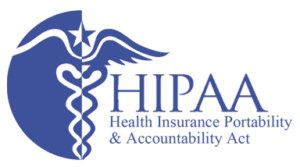From March 1, 2020, through Feb. 28, 2021, “providers did not meet Medicare requirements and guidance when billing for some psychotherapy services, including services provided via telehealth,” the OIG states in the report. Specifically, 128 sampled enrollee days out of a total 216 sampled enrollee days did not meet documentation requirements.
Based on the sample results, the OIG estimates that providers received $580 million in improper Medicare Part B payments ($348 million of that was for telehealth services) out of the $1 billion that Medicare paid for psychotherapy services during the first year of the PHE. That, of course, is speculation on the OIG’s part; the audit only confirmed improper payments of $35,560.
What are the Documentation Requirements for Psychotherapy Services?
In the report, the OIG breaks down the issues auditors found in their review of claims, which did not include medical necessity or quality of care. Based on their findings, here are the things coders and auditors should look for in their providers’ documentation for outpatient psychotherapy services:
> Psychotherapy time must be documented.
> Providers should document start and stop times or total time.
> And if a separate evaluation and management (E/M) service is also performed during the encounter, make sure the provider differentiates the time spent on both services. Time spent performing E/M services cannot be counted toward the time requirement for psychotherapy services or vice versa.
> Treatment plans are generally required.
> There is no treatment plan requirement for outpatient psychotherapy services that is applicable in all jurisdictions. In general, though, Medicare Administrative Contractors (MACs) expect treatment plans to be documented in the medical record and include the following:
> type, amount, frequency, or duration of services to be furnished;
> the enrollee’s diagnosis; type of service; expectation of improvement in the patient’s disorder or condition, or maintenance of level of functioning;
> a periodic summary of goals, progress toward goals, and an updated treatment plan;
> a detailed summary of the session, including descriptive documentation of therapeutic interventions; and
> the patient’s capacity to participate in psychotherapy.
> Compliance with incident-to requirements.
> Incident-to services must be an integral part of service to the patient’s diagnosis or treatment and must be provided under direct physician supervision.
> During the PHE, the supervising physician could be virtual, but use of audio and video technology was (and is) required.
> Make sure the provider signs the medical record.
> Indicate whether the service was provided in person or via telehealth.
> Use the appropriate place of service code indicators and modifiers for telehealth services.Providers were expected to comply with existing Medicare documentation requirements for psychotherapy services during the audit period, according to the OIG. In other words, the PHE for COVID-19 did not exempt providers from documentation requirements.
Coding Psychotherapy Services
Of course, correct coding is also important, and is directly tied to providers documenting the time they spend on psychotherapy. The CPT® codes are:
> 90832 and 90833 for 16 to 37 minutes of psychotherapy
> 90834 and 90836 for 38 to 52 minutes of psychotherapy
> 90837 and 90838 for 53 or more minutes of psychotherapy
> Providers cannot bill for psychotherapy of less than 16 minutes.
Psychotherapy Services and Telehealth
Before the beginning of the PHE, Medicare enrollees were able to receive certain telehealth services, including psychotherapy services, if the following requirements were met:
> The provider had an established relationship with the patient;
> The patient received the service in a designated rural area; and
> The patient traveled to, or was located in, a certain type of originating site; and the telehealth service was provided by live video only.These requirements were loosened during the PHE, and some of the flexibilities remain in force today, for the time being.
OIG Recommendations to CMS Will Affect Providers
The OIG found that for 29 of the 216 sampled enrollee days, providers did not accurately identify whether the encounter with the patient was in person or via telehealth. Claims were paid anyway, and because the services were being paid the same during the PHE, no overpayment was incurred. However, this means the quality of the data is skewed.
In the end, the OIG determined that there were documentation inefficiencies for psychotherapy services before and during the PHE. OIG encourages CMS and MACs to improve oversight by conducting Targeted Probe and Education (TPE) audits.
In addition to recouping the $35,560 in identified improper payments, the OIG recommends CMS review MACs’ local coverage determinant (LCD) documentation requirements for psychotherapy services to ensure consistency. CMS did not concur with this recommendation. There’s a useful table that illustrates the difference in psychotherapy documentation requirements in MACs’ LCDs in Appendix C of the report.
For more information, visit: https://www.aapc.com/blog/88200-meet-documentation-requirements-for-psychotherapy-services/




